- News
- Reviews
- Bikes
- Components
- Bar tape & grips
- Bottom brackets
- Brake & gear cables
- Brake & STI levers
- Brake pads & spares
- Brakes
- Cassettes & freewheels
- Chains
- Chainsets & chainrings
- Derailleurs - front
- Derailleurs - rear
- Forks
- Gear levers & shifters
- Groupsets
- Handlebars & extensions
- Headsets
- Hubs
- Inner tubes
- Pedals
- Quick releases & skewers
- Saddles
- Seatposts
- Stems
- Wheels
- Tyres
- Tubeless valves
- Accessories
- Accessories - misc
- Computer mounts
- Bags
- Bar ends
- Bike bags & cases
- Bottle cages
- Bottles
- Cameras
- Car racks
- Child seats
- Computers
- Glasses
- GPS units
- Helmets
- Lights - front
- Lights - rear
- Lights - sets
- Locks
- Mirrors
- Mudguards
- Racks
- Pumps & CO2 inflators
- Puncture kits
- Reflectives
- Smart watches
- Stands and racks
- Trailers
- Clothing
- Health, fitness and nutrition
- Tools and workshop
- Miscellaneous
- Buyers Guides
- Features
- Forum
- Recommends
- Podcast
 zwift-photo-cycling-03
zwift-photo-cycling-03Everything you need to know to try racing in Zwift

This article includes paid promotion on behalf of Zwift
Virtual racing is getting a lot more popular: this year will see the first ever UCI world championship jerseys handed out on Zwift and in response to the current lack of racing on roads and circuits British Cycling has announced a calendar of events on the platform with races on Tuesdays and Thursdays and workouts on Wednesday. You might not be in any danger of bagging yourself some rainbow stripes, but if you’re keen to get involved in racing online then here are some of our top tips.
Sign up to Zwift and get a trainer
It goes without saying that you’ll need to register with Zwift and get a suitable trainer to strap your bike to, preferably a smart trainer as these provide power measurement and make riding the virtual roads of Zwift much more realistic. This guide has everything you need to know about Zwift and choosing a trainer setup to suit your budget.
Find a race
So you’ve got yourself set up on Zwift, now you need to find a race. Luckily that’s really easy: there’s a list of events at the Zwift welcome screen but you can also use the companion app or visit this Zwift webpage which provides a full list of upcoming races with a description of the type of race and the rules for the race.
There are different types of races to choose from, from flat courses to hilly routes. Your weight will impact how you go on a flat or hilly course, lighter riders will be at an advantage on the hills but a disadvantage on the flat roads, so pick a race to suit you and your strengths. There are now time trial events too, both on the flat Tempus Fugit route across Fuego Flats in Watopia, and up the Bologna TT course.
There are also handicap races, which are fun because lower categories set off first and are chased by the higher categories. That can be both motivating and entertaining.
Choose the right category
Racing on Zwift is very accessible. Like real road races, Zwift races are divided into categories, A being the hardest and D the easiest based on your power to weight ratio. The best advice is to start in a lower category and see how you get on. Categories tend to merge on the road so don’t be surprised if find yourself racing amongst lower or higher category racers.
The categories are organised by w/kg, which is your power to weight ratio. You can determine yours from an FTP test, but if you haven’t done one of those you might have a good idea what your sustainable w/kg is from riding around Zwift and other events. Here are those categories:
- A category – FTP of 4.0+w/kg
- B category – FTP of 3.2-3.9w/kg
- C category – FTP of 2.5-3.1w/kg
- D category – FTP of 1-2.4w/kg
One word of advice: the numbers are only a suggested average and you’ll most likely – particularly at the start – have to put out more watts than your category, so don't be surprised if you're producing a number well in excess of the race description for the first few minutes until things settle down.
Category selection is done on an honesty basis. This is perhaps an area prime for improvement, maybe Zwift selecting a suitable category based on your FTP or recorded data.
For seeing how you’ve got on after a race, www.zwiftpower.com is a really useful website that, provided you grant it access to your Strava data, records all your important data and lets you analyse your race and see how you compared to your rivals. It also recommends if you should move up or down a category.
Get a good warm-up, races start with a bang!
I can’t overstate this enough: get a really good warm-up before you join a race. The races start fast and hard so you’ll want to have your body primed and ready to go full gas as soon as the timer begins. There's no rolling out gently with a neutral zone like a road race, it's like a crit race if you've ever done one of those.
Avoiding getting dropped in the first five minutes can be a challenge. That’s why warming up is so important, but it’s worth tolerating the pain because often the races do settle down into a rhythm once this initial shakedown has occurred.
“Hang on there - like with crits, the races in Zwift start hard, but they do ease off", says Zwift’s Chris Snook. "Often you will be in the red for the first few minutes of the race, but get through this and you can settle in. Many racers wind up the power a few seconds before the race starts - this means they will be able to get a fast start as they will already be up to speed". That's good advice, listen to him.
Once the initial excitement has calmed down you might find yourself in a group and you can then work together and ride as a pack before sprinting for the finish line. Don't give up if you get dropped: it's likely loads of other racers will be dropped too, and if you continue you'll most likely find yourself riding in a small group. Yes you're no longer racing for the win, but you can still ride hard and get a good workout.
Enter the race early to get gridded near the front
As important as getting a good warm-up is before a race, so too is entering the race early because that way you’ll be gridded near the front of the group, giving you an instant advantage. Better to slide back through the group or set the pace than chase on from the back of the peloton.
Close the gap!
Getting dropped is never good so try and do your best to close gaps as quickly as possible, because once you get dropped it’s really hard to close the gap. "As Ian Bibby said after round 1 of the KISS Super League, let gaps open up behind you - not in front,” explains Zwift’s Chris Snook.
Zwift has developed in-game drafting, so that riding in the slipstream of another rider really makes a noticeable difference. Tuck up behind the rider and you’ll be stuck to their wheel and you’ll be able to conserve energy as you won’t have to produce as much power to maintain the same speed. How do you know if you’re successfully drafting? Your virtual rider, or avatar, will sit up.
Tactics do matter
You might think there’s no place for tactics in a virtual race, and that it’s just a case of how can output the most power. Not so, says Zwift’s Chris Snook, who offers this advice.
"Like in real life racing, there are key places to attack in Zwift. You need to learn these points. Certain parts of courses can see gaps go out very quickly - you need to learn these. Deploying PowerUps in races at the right times can make the difference between winning the sprint or forcing a breakaway.
"Knowing how the races work gives you an advantage at the start - get an early PowerUp, start hard etc. Make friends in races - you can still message in racing - try and form an alliance and work together to break away. Learn when you need to put the power down - getting on the power at the right moment can see you put the hurt on your opponents while you are easing back."
Turn the trainer realism down
Smart trainers are incredibly effective at providing a realistic riding experience on the climbs or descents of the various virtual worlds, but one tip we’ve used to good effect is to smooth out the climbs and reduce the reliance on gear changes to adapt to the terrain. You can do this by moving the trainer difficulty slider down a bit as in the picture below - it's set a 50% by default.
It basically reduces the resistance changes on hills. What it doesn’t do is reduce the power required, you still have to pump out the same watts, it just makes the effort more consistent on the ups and downs. It also helps those with smart trainers to not get dropped on the downhills versus people on basic trainers that don’t replicate the ups and downs.
Make use of the PowerUps
Not all races allow the use of power-ups, but many do, and they can be a useful asset if used smartly.
PowerUps are given out randomly by Zwift and you need to grab one before you join a race. They are earned any time you ride through the start/finish, KOM or sprint banner. There are PowerUps that provide an aero boost, lower your weight or give you a draft boost, and if used at the right time can be a useful benefit. There's even one that makes you invisible to the other riders for a short time, perfect for attempting a breakaway!
You can pick up PowerUps when warming up, and you can keep a PowerUp when you join the race. So if you struggle at the start of races generally, see if you can pick up an aero or drafting PowerUp before the race starts and take it to the line.
Use the mobile companion app
Having the mobile companion app to hand on a phone or tablet is a really useful way to keep track of groups and use PowerUps.
Get a towel and massive fan
It goes without saying but indoor training can be hot and sweaty, and racing amps up the intensity level so you’ll definitely need the biggest most powerful fan you can get and also a towel for mopping up the sweat.
Stay hydrated and fuelled
Make sure you are adequately hydrated and fuelled before a race, and then aim to stay hydrated during a race. A typical race might last up to an hour and you’ll burn through a lot of calories, just as you would in a real-world race. If you’ve fuelled up before the race you shouldn’t need any additional food during the race, but some people might prefer to have a gel to hand or do one before the race starts. It's personal preference.
Choose the fastest bike
We didn’t realise the bike choice would make any difference in a virtual race, but apparently, it can, according to this blog post by Zwift Insider.
It reckons the Tron Bike is the fastest bike but you do have to complete the Everest Challenge to unlock it. Following that is the Cervelo S5, Trek Madone, Canyon Aeroad and Zwift Aero. Don’t forget the wheels too, with the Zipp 808 wheels apparently being the fastest wheels. You do have to earn these frames and wheels and you only do that by riding around Zwift. So get pedalling.
ZwiftPower racing results website
ZwiftPower is a really popular third-party race results website. It shows results the second the race has finished, listed by category with lots of detailed information that lets you see how you fared against your fellow racers. It also’s a good way of weeding out any abnormal results.
Check it out at https://www.zwiftpower.com
Do you Zwift race? Got any tips you can add? Let us know down below.
David worked on the road.cc tech team from 2012-2020. Previously he was editor of Bikemagic.com and before that staff writer at RCUK. He's a seasoned cyclist of all disciplines, from road to mountain biking, touring to cyclo-cross, he only wishes he had time to ride them all. He's mildly competitive, though he'll never admit it, and is a frequent road racer but is too lazy to do really well. He currently resides in the Cotswolds, and you can now find him over on his own YouTube channel David Arthur - Just Ride Bikes.
Latest Comments
- mitsky 35 min 52 sec ago
Is it any wonder that drink driving is still a problem when the police do nothing even with clear evidence like this: https://youtu.be/hw071PAofHQ
- Rendel Harris 42 min 22 sec ago
Such as, for example, saying: "It’s made from two types of fabric: super-loud yellow (orange is also available as a colour option, as is pink in...
- Mr Blackbird 47 min 22 sec ago
Possibly, but I think there will still be a time delay between receiving a warning and looking and the brain processing the image.I guess cycling...
- chrisonabike 2 hours 21 min ago
Indeed - but again these are perhaps questions we should keep asking. Even if the immediate answer is "well we are where we are" or "how on earth...
- Surreyrider 3 hours 15 min ago
Specialized aren't that American. Merida owns something like 49%.
- wtjs 4 hours 9 min ago
Then smash bad driving behaviour very hard...
- David9694 8 hours 46 min ago
Calls for Oxfordshire transport chief to resign blocked...
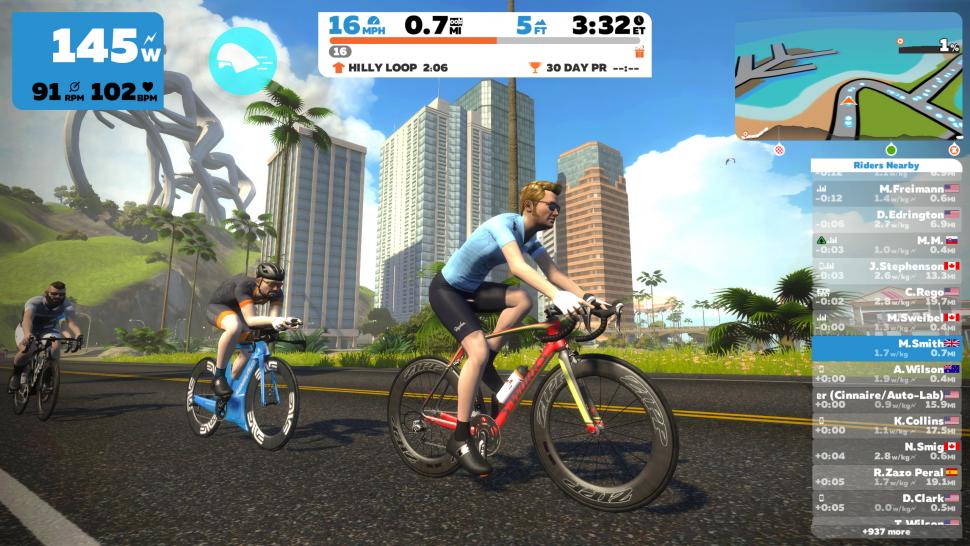

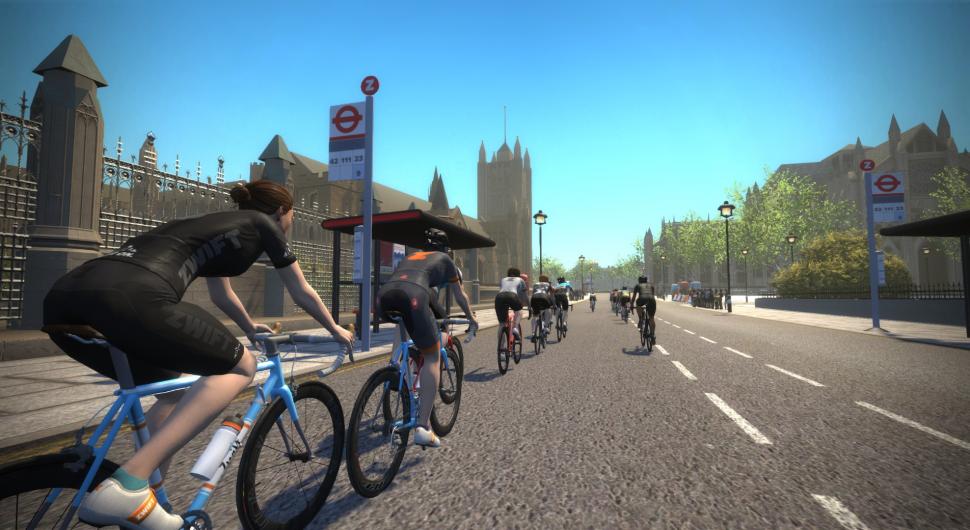
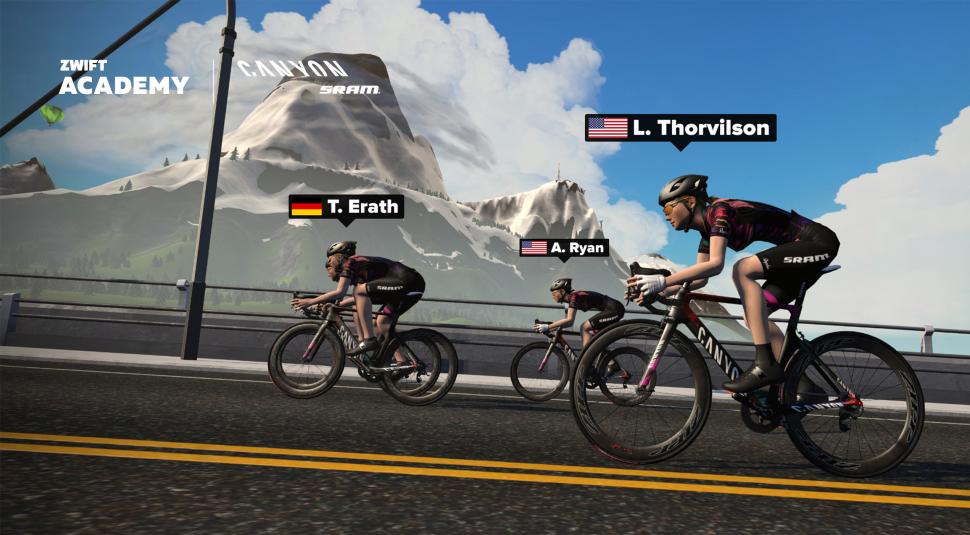


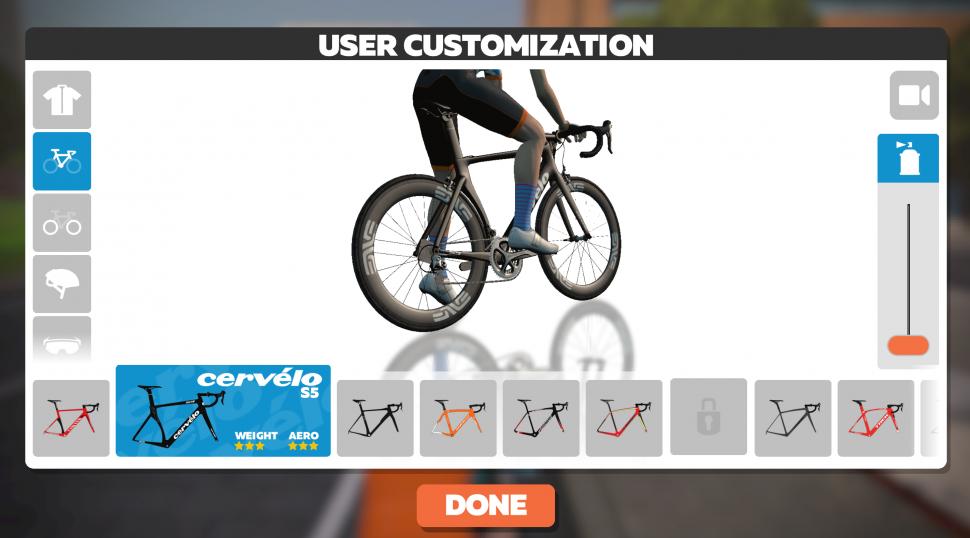
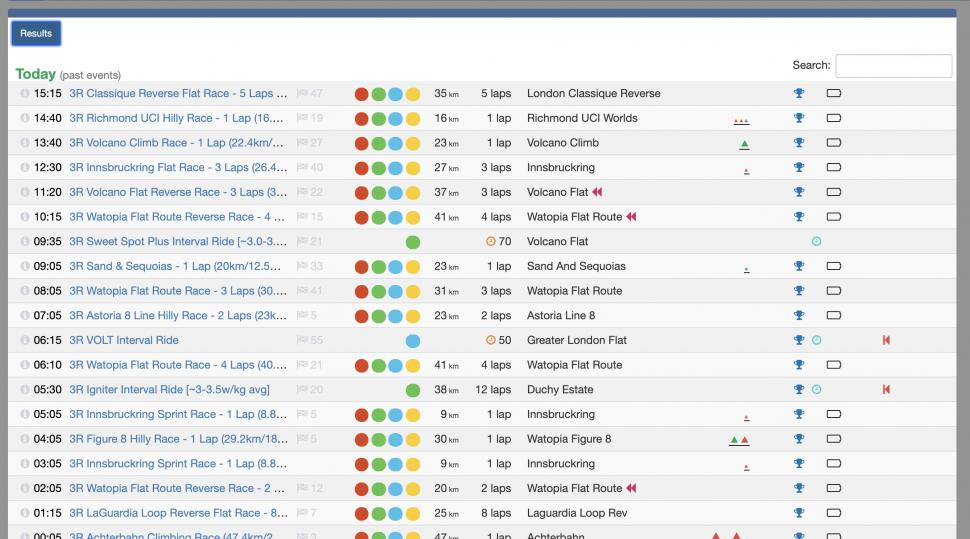
Add new comment
29 comments
Novel Zwift model for racing categories. Thoughts?
http://www.jordanpfowler.com/cycling/zwift-racing-categories-a-new-model/
Novel Zwift model for racing categories. Thoughts?
http://www.jordanpfowler.com/cycling/zwift-racing-categories-a-new-model/
Zwift is the major platform, with mass racing events 24 hours a day, to suit everyones' timetable. You can also train with their dedicated plans, ride casually collecting points and badges for new levels.
Some of the climbs are pure copies in gradient and distance to real climbs. Others are just varied terrain. There are 7 worlds now with something like 40 routes. to ride
Bkool doesn't have a racing platform. There are some groups who organise their own events- nothing on the scale of Zwift.
The real world climbs are recorded, so you can test yourself for particular climbs. The Bkool sim is a bit clunky compared to Zwift.
If you want to experience the full Zwift, is to sign up to the Tour du Zwift starting in a few days. Literally there could be thousands on each event in the early evening. Complete the whole series of events to earn the virtual shirt. It also allows you to gauge your ability against many hundreds of others.
So you want to get into Zwift racing?
Look in a mirror and have a f@&%$£#: word with yourself.
Time and Covid hasnt treated the above post kindly.
I have a smart trainer on order, and I am considering whether to sign up to Zwift or Bkool. I am not really interested in racing against others. What I want to use it for is to ride/train on my own, and ride classic routes such as the Alps, etc.I would like there to be a good selection of routes available. Could someone please advise if this is possible on either Zwift or Bkool? Any help/advise gratefully received.
Thanks.
I would extol the positives of Zwift.
I cannot comment on Bkool.
Zwift only has Alpe Du Zwift and the Innsbrook climbs that mimic real life climbs. The appeal of Zwift goes way beyond that.
It has a number of various climbs that will definitely tax you. My opinion is that if you just want to ride willy-nilly; you can. If you want group rides (my fave); you can, and the variety is terrific!
Training rides, recovery, social, gran fondos.....you name it.
Zwift is very positive. psychologically there is lot and lots of positive reinforcement.
I don't race a lots but it's a lot of fun. The commentry on this thread is quite negative regarding cheating etc. None of us are ever going to win much but racing on Zwift is intoxicating...and I'm an audaxer!
Structured rides aren't as good as trainerroad but there is plenty to choose from.
I'm a fan of Zwift.
It's not a replacement for real world riding but a bloody good substitute in our winter and on crap rainy days/days when you can't leave home.
Choice of routes etc? Quite comprehensive with more constantly being added. You won't get bored quickly.
That's great, thanks very much for the help. Much appreciated!
Take a look at bigringvr for the classic routes such as Alps etc
Get a friend to game your stats so you can get a Tron bike (allegedly)
When I had a Tacx Satori Smart it was kind of a permanent ERG mode with it being manual resistance. It was useful for making a bit of break on downhill sections and bits where it went between gradients quite quickly. I'd just sit there at 200w or whatever and gradient changes wouldn't catch me out.
Show me a descent in Zwift where you spin out on a 50*11 gearing. Spinning out is something like 130+rpm.
50*11 @130 rpm is 46.5mph
53*11 @130 rpm is 49.3mph
Rarely do I exceed those speeds only briefly on the very steepest parts like -17%
Once at these speeds you're well into the realms of freewheeling. I have descended the Pretzel by powering down >250W and also freewheel, there isnt much difference in time, only a few seconds. I'd rather save energy and freewheel and use power on the flatter bits.
You don't mention that a 50 chainring is a disadvantage too (you spin out too often, especially downhill, unable to generate enough watts compared to someone with a 52 or 53 chainring).
And to be honest, it shouldn't be, but Zwift continues to ignore the requests for a proper difficulty setting - that would be a difficulty setting that allows you to increase resistance both uphill and downhill.
If you could set a linear increase in the resistance then your power (which is all Zwift uses at the end of the day to calculate your speed in the race) could be achieved with less gearing. So you would achieve the same in-game speed at your same power output, but in a lower bike gear (or with lower cadence). Hence no spin-out in 50.
A side benefit of this is less noise from your trainer as you don't have to run it at max revs to just get a reasonable Watt output. Other training programs (e.g. Trainer Road) provide this type of resistance adjustment too.
The current difficulty setting is an utter joke - why allow people to make hills flat? You may as well allow not have flat and hilly courses in Zwift - just code them all to be flat, if you allow users to drop difficulty
It’s not a difficulty setting - it’s a realism setting. Dropping it to zero doesn’t make the hills flat it just stops the trainer changing the resistance meaning you don’t need to change gears. You still have to put out exactly the same power to go at the same speed whether that’s uphill or downhill doesn’t matter. A lot of people find it easier to keep a high power output if there are constant variations whereas others prefer to tap out a really consistent tempo. Horses for courses tbh.
I agree the current slider is in reality a "realism" setting (and hence should be called that). My main point is that we are still missing a proper difficulty setting that allows you to increase base resistance so you can run lower gears both uphill and downhill for the same power output.
My secondary point is that the current "realism" slider should not be allowed for races. Allowing someone to just sit at the same cadence whether it is uphill or downhill (granted it changes the speed on screen reflecting gradient) turns every race into a flat course. It destroys the ability for people who can adapt better to changing gradients (i.e.climbers) to do well. Those who can't (time trialists and sprinters) are already fine because they can choose to race on a flat course.
If you didn't allow it in difficulty settings in races you'd have to ban people dumb trainers with power meters which doesn't make sense. There are plenty of videos of people testing the difficulty settings showing that watts are watts and the time up a climb is the same. There will be a physiological difference with a different cadence but it isn't going to change who is stronger up a climb.
It doesn't really flatten the climb. if it did races wouldn't split up when the road goes up. I have it lower than 100% for a couple of reasons. I want to foster a faster cadence for riding in general and it puts less strain on the bike's components with lower torque. You could set it to 0%-20% but at some point you will probably spin out when sprinting/attacking. It's a game, play the game. Don't worry about what others are doing and get a good work out.
On longer descents I am a big fan of super tuck. Can keep you with a group and allow a recovery before going again. Works the same with anysize of chainring.
Im too old to get upset with my performance, I just like a level playing field or as near to it.
I dont like it when riders I know where I'm usually stronger, destroy me on Zwift. Its generally down to cheaper turbos with less resistance and varying accuracy of the PM.
few of my fellow racers drop down in performance when upgrading to the like of a Neo> My expereince going from Vortex to Neo 2. Dropped 25 watts and now I feel the the slopes at 25% not 7%. But I had fun on the Vortex and it got me into turbo training. Also the software is getting much more accurate. I saw big change last year. The Neo 2 taught me its W/kg thats the important figure and its made me faster on the road. I'm now in B cat doing ok not in the A cat at the bottom Of course its not like the road but I take it for what it is - indoor training. No its not like the real Alpe d'Huez but its a fun climb online and a very good workout any time you want.
Of course its not like the road but I take it for what it is - indoor training. No its not like the real Alpe d'Huez but its a fun climb online and a very good workout any time you want.
I dont know many that climb Alpe d'Huez as quick as the Zwift version. One main reason is that Zwift doesnt have your bike, bottles, tool kit weight, only body weight. Then there is wind, heat.
The budget trainers with PMs do have an advantage with regards to the amount of resistance applied. Ive seen a few of my fellow racers drop down in performance when upgrading to the like of a Neo or other high end turbo
"Your weight will impact how you go on a flat or hilly course, lighter riders will be at an advantage on the hills but a disadvantage on the flat roads, so pick a race to suit you and your strengths".
Maybe in real life but probably not on Zwift. As a 92kg rider, I've ridden the Alpe in a little under an hour (57 mins). Would I climb that like in real life? No way!
How does Zwift know the limits of gradient on your turbo? Surely that's quite a factor when it comes to climbing? A friend of mine is limited to 6% whereas I'm 16% so she has an advantage over me straight away.
I guess it comes down to pure power? It probably just means you 'have' to drop into lower gears but she'll still have to spin up and work more to match your power output.
I don't think your friend has an advantage. My own Tacx trainer has a gradient limit, so if the Zwift gradient is greater, my power output remains the same but Zwift takes note of the extra gradient and reduces my speed to compensate for the difference.
I don't think your friend has an advantage. My own Tacx trainer has a gradient limit, so if the Zwift gradient is greater, my power output remains the same but Zwift takes note of the extra gradient and reduces my speed to compensate for the difference.
Personally, I've always found it self-defeating to blast away from the line desperately keeping up with the front-runners. I've placed very high in my Class C races by knowing exactly how much power I can output over a given amount of time and just sticking to that (+ a bit). Every single race I've done I've warmed up, and set off at a decent, but not ridiculous pace finding myself about 2/3rds down the field. Then, always, ride hard through the field picking up rider after rider who blasted away to keep up with the A Racers and who are struggling and stopping. It's about timing, wanting to finish strongly, rather than desperately hanging on for the line.
And yes, if you're serious about doing some races and wanting to know what level you're really at, then registering with ZwiftPower is a must. The Zwift results on their own are not to be taken seriously.
Join www.zwiftpower.com cuts out most of the cheaters and rollers on zpower but theres cheaters in every sport. TBH if you know how hard you raced, its great fun. I dont get wound up by the odd idiot. Take it for what it is, great fun and hard training and you will be fine. Worry about cheaters? Was going to suggest you race in the real world but theres more cheating there Chill enjoy.
Chill enjoy.
Is it possible to detect cheating?
If you take your racing seriously, then a rider will sign upto Zwiftpower.com(this is not Zwift). Input all your vitals stats and link to Zwift. Your results/statistics are collated, rankings-world wide are given.
Yes its possible, but not fool proof. It relies on an element of trust and the rider inputting the correct details, weight, height, age etc.
Ideally tou are using a quality smart trainer or dumb resistance trainer with power meter pedals/crank. Zwift uses power to calculate speed with other parameters.
Your results will be disqualified from most events these days if you use a non smart no power meter turbo. Your power is estimated, however ZP will not accept these results.
Zwiftpower police the results and will disqualify if you dont have a HR monitor and your results are odd.
There is a reporting procedure by other riders and if ZP suspect you've been cheating/gaming the race, you will be banned for a month.
Our own little sub group within Zwift were notified a rider who was found to have enhanced their power by 20%, elevating their ranking from C cat to B cat. They dont race with us anymore, not because we banned him, he was flagged by ZP!
Having just replaced my Bkool with a Tacx Vortex and watching a youtube video about calibration, I've found it's very easy to cheat in Zwift.
The long and short of it is loose contact and lower tyre pressures. The guy in the video was initially measuring accuracy against his Stages and noticed it was way out before the tyres got warm and pressures stablised. He said he gained 100w with some messing about intentionally.
I'm guessing any sort of real racing has to be done on direct drive trainers with no terrain adjustment? I've always set mine to maximum realism as I wanted hills to feel like hills but it is annoying when you get blasted on downhills.